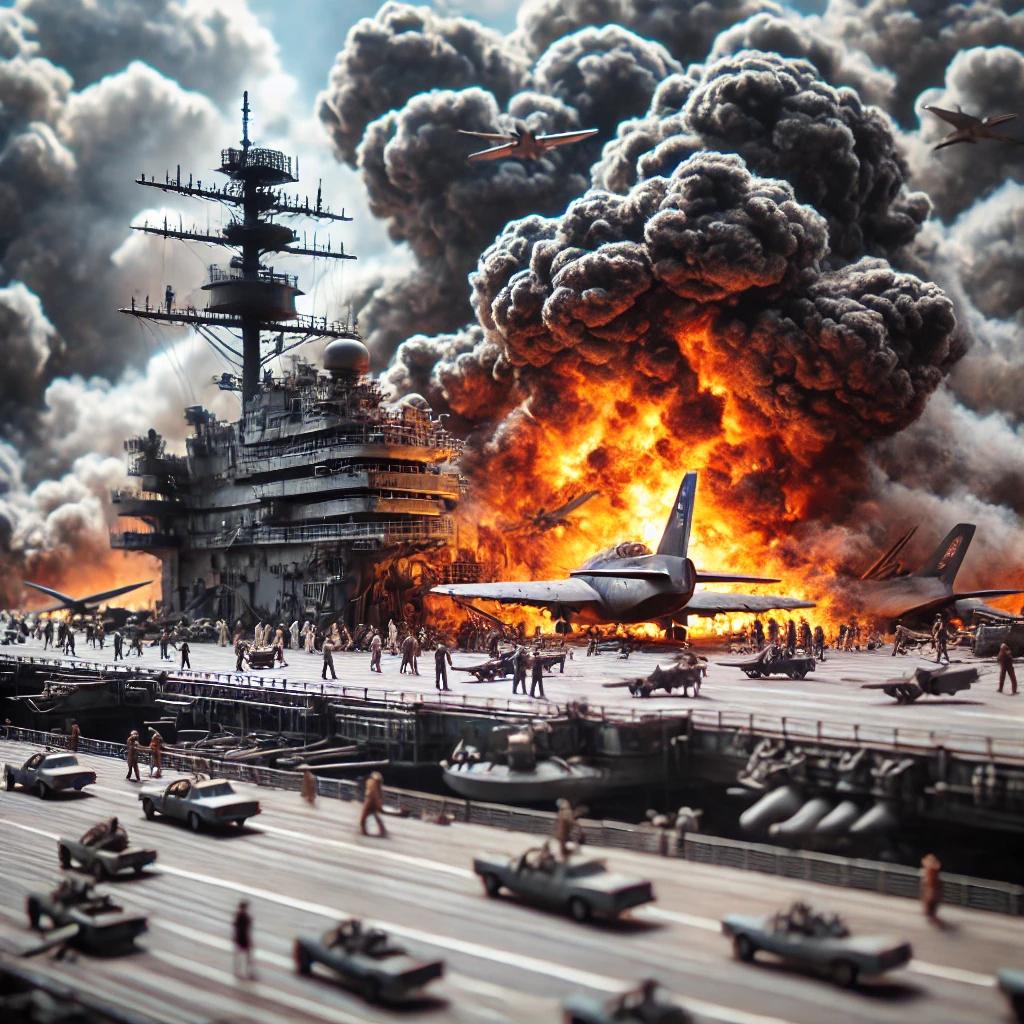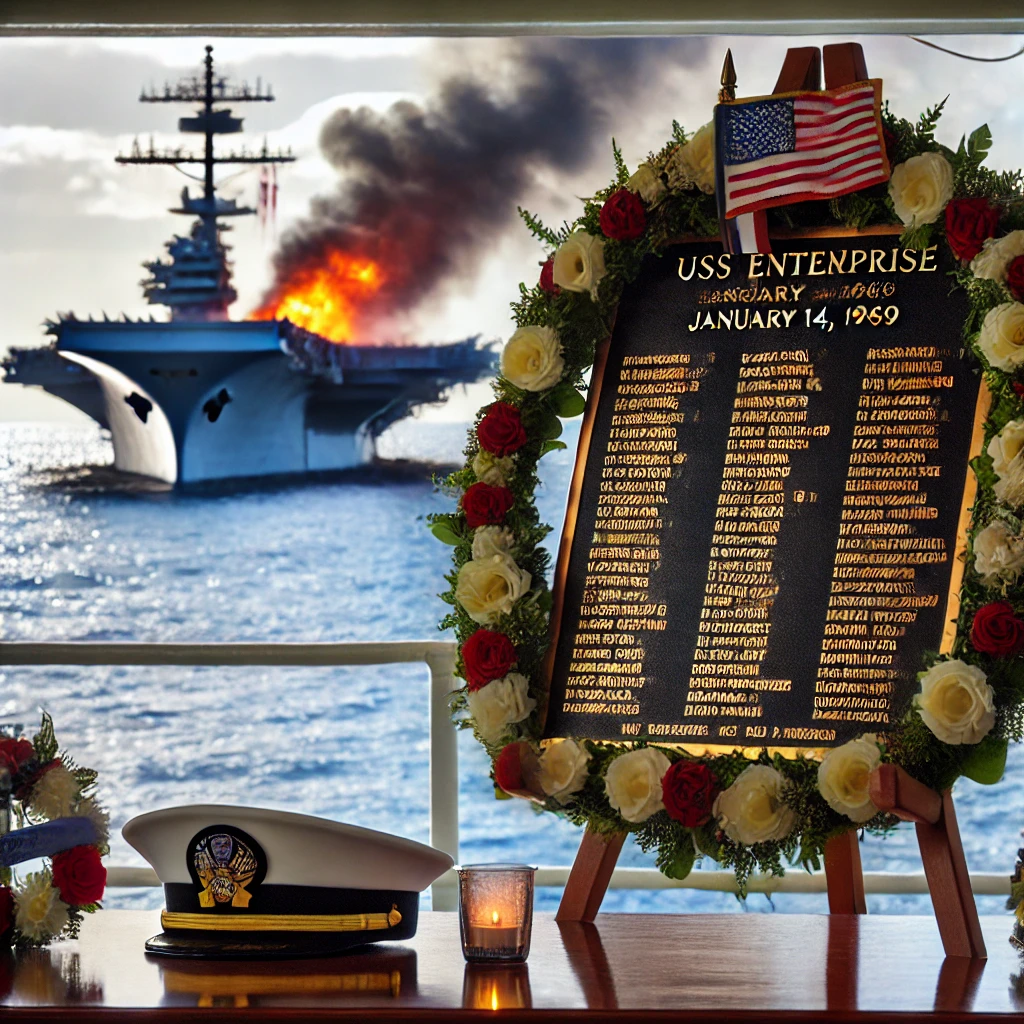On January 14, 1969, the aircraft carrier USS Enterprise faced a devastating disaster that left a lasting imprint on naval history and safety standards. An accidental detonation of a rocket mounted on a parked aircraft caused a series of catastrophic explosions aboard the ship. The incident resulted in the deaths of 27 crew members, injuries to over 300 others, and significant damage to the ship. This tragedy remains one of the most sobering reminders of the dangers faced by military personnel.

The Explosion and Immediate Aftermath
The USS Enterprise was stationed off the coast of Hawaii during pre-deployment exercises when the tragedy struck. A Zuni rocket accidentally overheated and exploded on the flight deck, triggering a chain reaction of fires and secondary explosions as other munitions ignited. The dense smoke, intense heat, and scattered debris created chaos and made firefighting efforts exceedingly difficult.
Despite the overwhelming conditions, the crew responded heroically, working tirelessly to contain the fire and prevent further destruction. Their quick action stopped the blaze from spreading to the ship’s fuel and ammunition storage, which could have resulted in an even greater loss of life and the destruction of the vessel. Nevertheless, the loss of 27 lives and the injuries sustained by hundreds highlighted the inherent risks of operating such a complex and heavily armed warship.

Significance and Lessons Learned
The tragedy aboard the USS Enterprise exposed critical flaws in safety protocols and equipment design. Investigations revealed that the Zuni rocket’s overheating was caused by a simple yet preventable malfunction in an electrical connection. Additionally, the storage and handling of munitions on the flight deck were identified as contributing factors to the scale of the disaster.
As a result, the U.S. Navy implemented sweeping changes to improve safety aboard its ships. Enhanced fire suppression systems, better munition storage practices, and stricter maintenance protocols were introduced. The incident also underscored the importance of rigorous training for emergency situations, leading to more comprehensive fire and damage control drills for naval personnel.
The Lasting Impact

The explosion aboard the USS Enterprise was a pivotal moment in naval history, leading to a shift in how safety was prioritized aboard military vessels. The lessons learned from this tragedy have saved countless lives in the decades since. Modern aircraft carriers and warships are now equipped with advanced safety technologies and are designed with redundancies to prevent similar incidents.
The heroism displayed by the crew of the USS Enterprise also serves as a testament to the resilience and bravery of military personnel. Their actions on that fateful day prevented a far greater disaster and ensured that the ship could return to service after extensive repairs.
Today, the legacy of the USS Enterprise explosion is remembered not only as a tragic loss but also as a turning point that reshaped naval safety standards. It serves as a somber reminder of the sacrifices made by those who serve and the importance of vigilance in preventing such disasters. As we reflect on this event, we honor the lives lost and the lessons learned, which continue to guide naval operations to this day.
